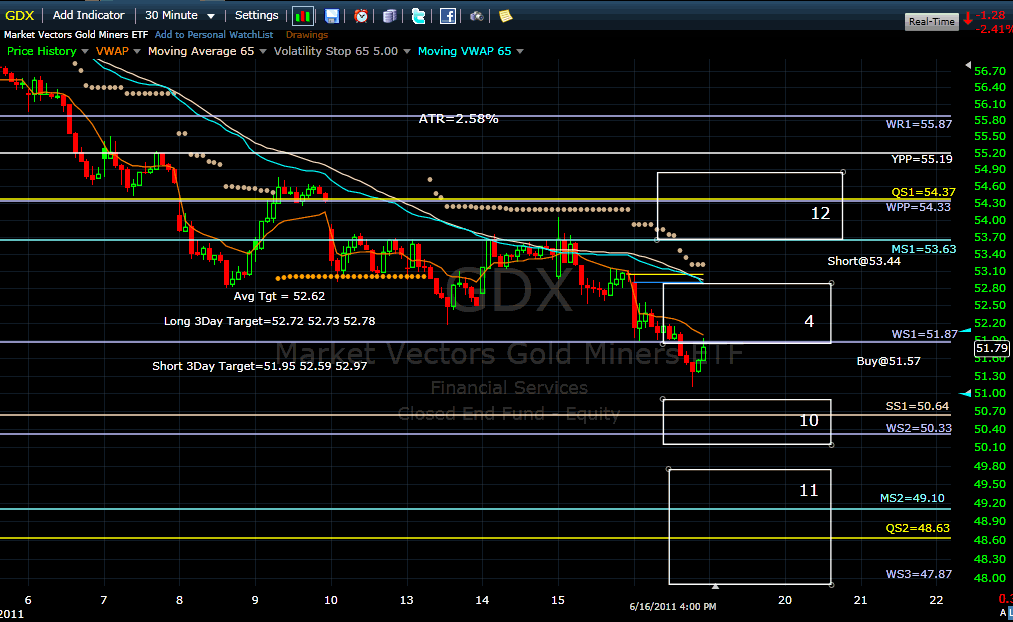Forum Clusters 110617.xlsx
Today's clusters are mildly bullish for IWM with a 14:11 support/resistance ratio.
The clusters are very bullish for GDX with a 10:4 ratio.
The most interesting fact is that QQQ tested and bounced from MS3 (53.90) yesterday. The S3 level on any timeframe has over 95% probability to be the low for the timeframe. So the low for June may be in for the Nasdaq.
About the political risk over the weekend, there is as much to be lost as to be gained by exiting prematurely.
A big gap up on Monday is as possible as a big gap down. The big gap down could not even hit our stop and reverse, while a big gap up would reward our patience at last!





 Reply With Quote
Reply With Quote
